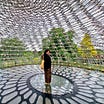My Hometown in a Cycle of Death and Rebirth
Remembering the February 6 earthquake in Turkey & Syria
Hi folks,
On this day, two years ago, we woke up to find out that a massive earthquake hat hit southern Turkey and northern Syria, destroying entire cities and killing tens of thousands of people.
One of first people I reached out to that morning was my dear friend Simge Andı. She is from Antakya, the capital district of Hatay province, the region that was hit the worst. I’ve asked her to write something for the blog to commemorate the event this year, and she has graciously agreed to do so. Below is her piece.
Going back home is often disorienting. You’re back where you spent years of your life, you know every street, you greet some familiar faces, yet it’s never quite as warm or easy as you remember. At some point you realize it’s just memories: rakı-balık dinners after your best friend’s heartbreak, corner-shop beer runs, that moment you and your ex held hands… The places remain, but feel oddly grown, leaving you painfully aware of the passing of time in your absence. Those snapshots of the past offer comforting nostalgia yet remind you of the distance time has carved.
I thought I’d always have that, at least. I left Antakya at 14 to attend high school in Adana, a neighbouring city. My exile continued in other amazing cities—first Istanbul, then London—where I carried that guilt like a growing debt for abandoning such a special place. But whenever I was back in Antakya, I felt free of it. That changed two years ago when another painful lesson struck: my hometown was destroyed in the February 6, 2023, earthquakes—one of the most devastating disasters the region has faced in modern times.
Now, when I visit, I can’t recognize the streets I once walked a thousand times. Through the window of our old house, there’s only an empty space covered in dust and rubble where our neighbor’s home once stood.
“Disoriented” would be an understatement to describe how I now feel while walking through the empty streets, past the rubble of the school where I spent years, and the vacant lot where my friend once lived. A terrible silence lingers since that night. Saray Street, once so alive with music, the mouthwatering aroma of saucy Antakya döner, and shops like Hasan Asker—where most of my generation spent hours choosing toys—now lies silent. The cram schools where young people chatted between lessons, the CD vendor who made us our pop compilations, the lively bookshops… all of it vanished.
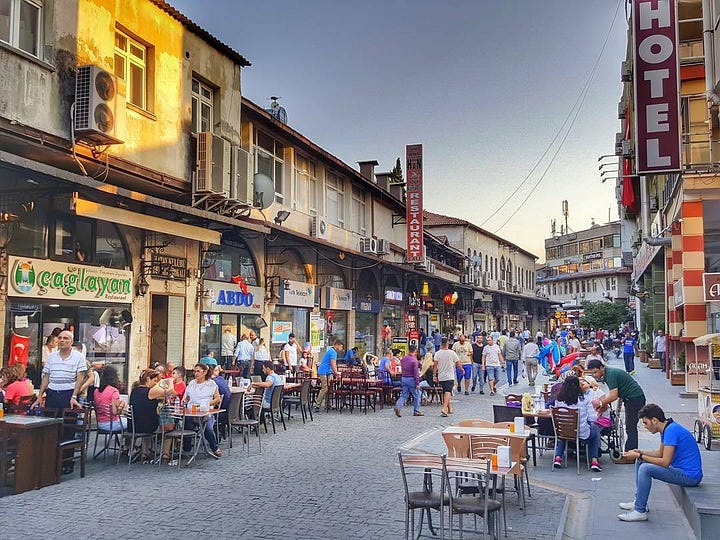
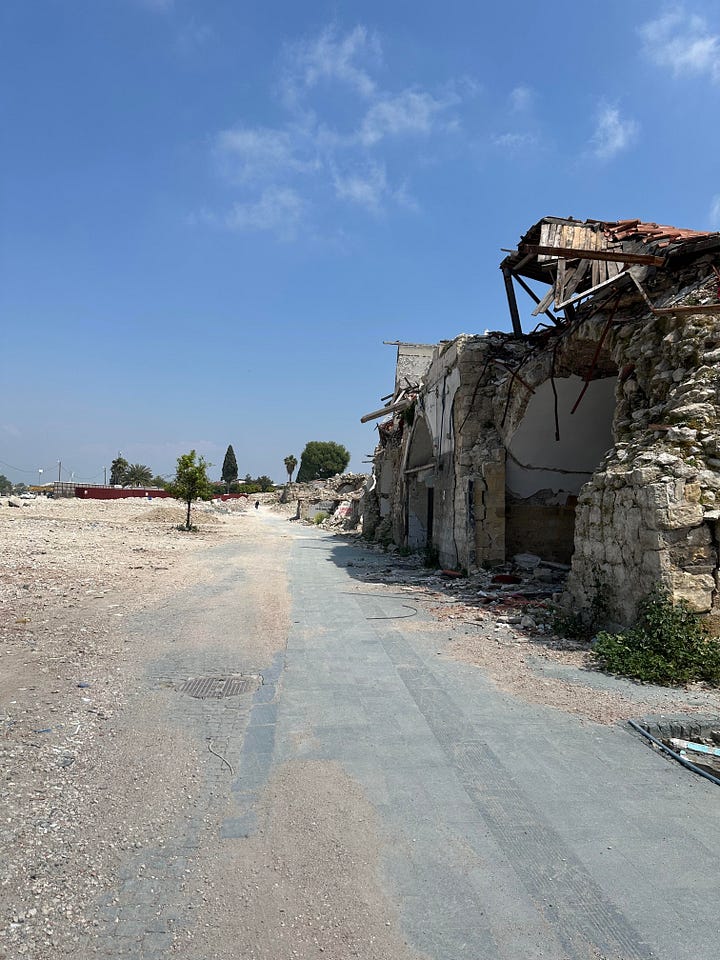
Walking to the Uzun Çarşı – Antakya’s bazaar – with my mom used to be our ritual whenever I visited home. First, we’d feast in our kitchen until we had to sleep. Then during the day, we would stroll by the Orontes River (Asi Nehri) and head toward Saray Street to visit my mom’s fruit guy, who always saved the best strawberries, green plums, fresh almonds, and chickpeas for her. Now, I can’t even find the corner where his colorful stand once stood.
Next, we’d wander into the famous Uzun Çarşı—chaotic in a sweet way, with people greeting each other, haggling over things, and stray animals roaming in search of scraps and some appreciation. Walking these streets that were once so full of life, I often ask: What was here? Is that the street with the restaurant where I planned to host my engagement party? The spot where I show off my hometown’s history, cuisine, and architecture to my friends, and then COVID ruined it all?
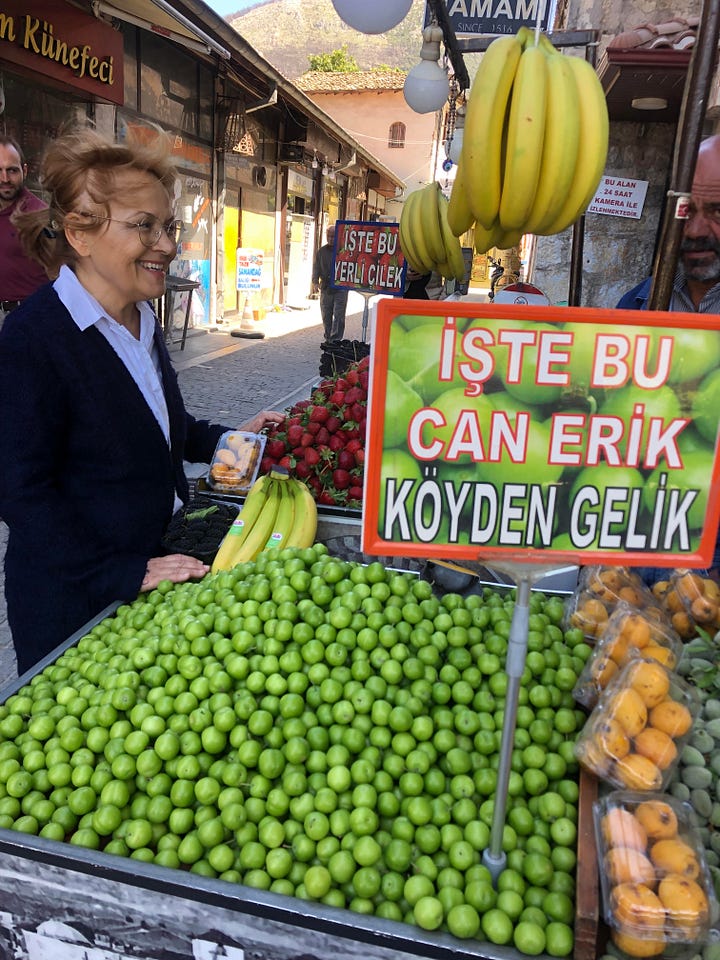

My mother, who wasn’t born in Antakya but who loved the city as fiercely as any native, used to guide me through it all. She would walk through the narrow corridors of the bazaar, saying hi to her favorite shopkeepers. I always felt like I’d get lost without her leading me through the spice-scented streets of this funky place. Now, she often too looks around, bewildered, asking: What was here? It’s as if the mind can’t reconcile the gap between memory and absence. Perhaps this is why we have such a hard time accepting death. A new form of guilt for not having spent enough time with a loved one lingers, haunting you after they die.
My only consolation is that, unlike us poor mortals, cities can be reborn. Just as they have been in many different parts of the world, if there are people who don’t want to let go of their memories and want to create new ones, cities can be resurrected. Antakya, the city I once called home may be dead, but a new, yet somehow also familiar one is emerging. The empty spaces that hosted so many different lives are now the grounds for giant construction sites that you can see from the plane that lands once a day at the Hatay airport. The new mayor’s face accompanied by hopeful messages, covers the void left by the violent tremors of February 6th: “Antakya is rising from its ashes …”

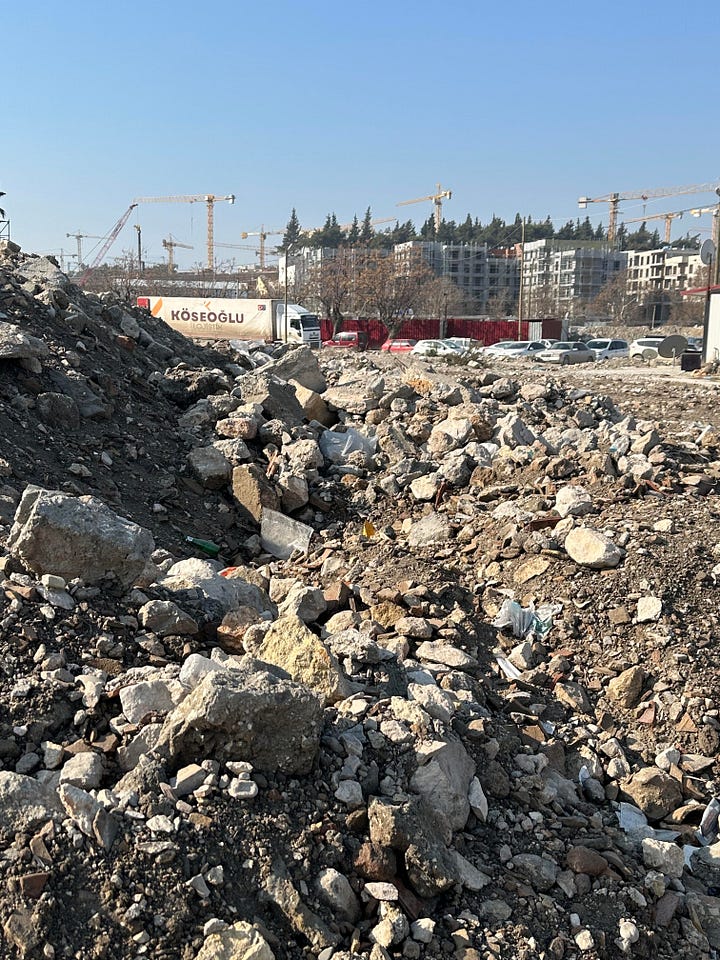
Over the centuries, Antakya hosted many great empires—from the Byzantines to the Romans—and survived countless disasters. It was repeatedly devastated by earthquakes, fires, and plagues. One of the most extensively documented periods of devastation was in the 6th century, when Antakya was levelled multiple times. Between 500 and 638, at least 12 disasters struck this city. Every time, its people brought the city back to life. In the same spot. Every version of the city that rose from the rubble was different, shaped by the resilience and determination of new generations.
It is 2025 and Antakya is once again torn between past and future. We don’t know if it will have the colors, smells, and sounds of what we used to call home. What will be in this new city? Will it smell the same? Will Saray Street resound with the same chatter? Will it be a bleak town of government-built projects, as many locals fear? We don’t know if the sensory tapestry that made Antakya feel like home can ever be replicated. Maybe, we’ll stand in front of the newly constructed buildings and ask ourselves the same question: What was here?
On the anniversary of the earthquake, I find myself caught between mourning what we’ve lost and nurturing the faint, yet persistent hope for what might come. The physical and emotional landscapes may have shifted, but the memories remain threaded through the hearts of those who refuse to let go. Much like centuries before, when disasters, wars, and epidemics struck this holy city, its people did not let it fade away… In that sense, perhaps the spirit of Antakya still lives—changed, but undiminished.





